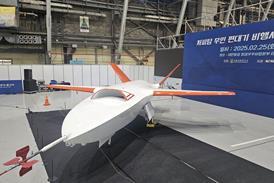Airbus Industrie has suffered a setback in its efforts to launch the proposed A340-500/600 growth derivatives in time for a 2001 service-entry date, after exclusive discussions with General Electric over the aircraft's powerplant were abandoned this month.
The collapse of talks with GE, which began in April 1996, is forcing Airbus to re-open discussions with Pratt & Whitney and Rolls-Royce, which have indicated that they are willing to study engines in the required 245-290kN (55,000-65,000lb)-thrust bracket. Airbus insists that it is "-standing by the programme" and its projected 2001 entry into service, despite the lack of a viable powerplant.
GE blames the failure of the talks on the two sides' "-inability to agree on financial terms and conditions. We defined the engine for the aircraft's technical requirements, but could not reach agreement on price and risk-sharing."
The US company is thought to have concluded that it could not make a satisfactory return on the estimated $1 billion cost of developing a new centreline engine, partly because of the lack of a clear second airframe application.
The A340 growth models are seen as crucial if Airbus is to compete effectively against the heavier, longer-range and larger versions of the Boeing 777 now under development. Several airlines, such as Swissair, are close to selecting an aircraft to replace 747-200/300s and had hoped to receive firm proposals from Airbus early this year.
"It is going to be tight, but we can still make it in time," says Peter Gysel, head of fleet development at Swissair, who adds that the carrier would also welcome a choice of powerplants for the A340-600. "The single-source solution was not really what we were looking for," he says.
As revealed by Flight International, R-R has begun studying a 245-290kN version of its Trent turbofan, initially aimed at the A340-500/600 (Flight International, 12-18 February, 1997, P5). The UK company believes that it may be able to establish a more attractive business case than that of GE, because it would make extensive use of existing technology from the Trent three-shaft engine family, significantly reducing development costs.
P&W, meanwhile, had been talking to Airbus about the suitability of its PW2000-based Advanced Ducted Propulsor (ADP)for the A340-600 before the consortium's exclusive deal with GE. These talks broke down because agreement could not be reached over risk-sharing and development costs.
"We definitely want to talk to Airbus about the A340-600 again," P&W says, but adds that it is not certain of the timescale.
The company says that it could look at offering a turbofan (possibly a derivative of the PW4000), the ADP (which it describes as a "very low-key effort") and a new geared-fan engine.
Source: Flight International























